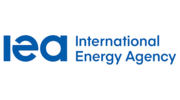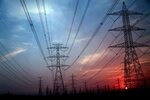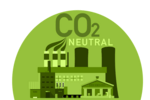News Release from International Energy Agency (IEA)
Wind Industry Profile of
Rapid progress of key clean energy technologies shows the new energy economy is emerging faster than many think
The pace of deployment of some clean energy technologies – such as solar PV and electric vehicles – shows what can be achieved with sufficient ambition and policy action, but faster change is urgently needed across most components of the energy system to achieve net zero emissions by 2050, according to the IEA’s latest evaluation of global progress.
Published today, the annual update of the IEA’s Tracking Clean Energy Progress online resource reveals remarkable gains in the past year. Electric car sales reached a record high of more than 10 million in 2022, a nearly tenfold increase in just five years. Renewable electricity capacity additions rose to 340 gigawatts (GW), their largest ever deployment. As a result, renewables now account for 30% of global electricity generation. Investment in clean energy reached a record USD 1.6 trillion in 2022, an increase of almost 15% from 2021, demonstrating continued confidence in energy transitions even in an uncertain economic climate.
The transition to clean energy is occurring at different speeds across regions and sectors, however. For example, nearly 95% of global electric car sales in 2022 took place in China, the United States and Europe. Stronger international cooperation is needed to spread progress on electric cars and other key technologies to all regions, particularly emerging and developing economies.
Clean energy deployment is also occurring faster in some parts of the energy system – such as electricity generation and passenger cars – where costs have fallen and technologies are already relatively mature. Meanwhile, rapid innovation is still needed to bring to market clean technologies for parts of the energy system where emissions are harder to tackle, such as heavy industry and long-distance transport. Positive steps on innovation have been made in the past few years, but a further acceleration is needed to soon bring to market more low-emissions technologies for these areas.
The 2023 update of Tracking Clean Energy Progress, available on the IEA website, tracks progress towards aligning the global energy system with a path to reaching net zero emissions by 2050. It does this by assessing over 50 different components, from sectors to technologies to infrastructure. The IEA also released today the newly redesigned Clean Energy Technology Guide, an interactive digital database that allows users to visualise the readiness and geographical distribution of more than 500 different innovative technologies or components across the global energy system, along with the accompanying Clean Energy Demonstration Projects Database.
“The clean energy economy is rapidly taking shape, but even faster progress is needed in most areas to meet international energy and climate goals,” said IEA Executive Director Fatih Birol. “This update of Tracking Clean Energy Progress highlights some very promising developments, underlining both the need and the potential for greater action globally. The extraordinary growth of key technologies like solar and electric cars shows what is possible.”
Although many sectors are not yet fully on track for international climate goals, the new analysis identifies crucial advances over the past year. For the first time ever, announced manufacturing capacity for electric vehicle batteries has reached levels sufficient to fulfil expected demand requirements in 2030 in the IEA’s scenario for achieving net zero emissions by 2050. This is backed by the momentum from major industrial strategies such as the Inflation Reduction Act in the United States and the European Union’s Green Deal Industrial Plan.
Solar PV has been upgraded to “on track”, as its progress now aligns with milestones consistent with net zero ambitions. Solar PV generated a record of nearly 1 300 terawatt-hours (TWh) in 2022, up 26% from 2021 and logging the largest absolute generation growth of all renewable technologies in 2022. The number of manufacturing projects in the pipeline for solar PV also saw massive growth in the context of widespread government support, especially in China, the United States and India. If all announced projects are realised, global manufacturing capacity for solar PV will more than double in the next five years, outpacing 2030 demand in the IEA’s Net Zero by 2050 Scenario.
Notable progress was made in the buildings sector – which has been upgraded from “not on track” to “more efforts needed” in the Tracking Clean Energy Progress three-tier rating system. Governments are increasingly introducing stringent building energy codes and performance standards, and the use of efficient and renewable technologies for buildings such as heat pumps and low-emissions cooling equipment is accelerating. Energy efficiency policies were also strengthened globally in the past year, such as in India, which enacted new policies for appliances, vehicles, industrial facilities and commercial buildings.
Policy is advancing in many regions. Earlier this year, for example, Indonesia became the first country in Southeast Asia to establish a legal and regulatory framework for carbon capture, utilisation and storage, and Namibia released a hydrogen strategy in late 2022.
Several technologies have seen important breakthroughs in innovation since the last updates to the IEA’s Tracking Clean Energy Progress and Clean Energy Technology Guide. The world’s largest battery manufacturer announced it would begin production of sodium-ion electric vehicles batteries, an alternative battery chemistry that can help reduce reliance on in-demand critical minerals. Two large-scale demonstrations of solid oxide electrolysers, a highly efficient technology to produce low-emission hydrogen, started operating earlier this year. There have been positive steps in innovative clean technologies for aluminium refining and cement-making – both industries in which emissions are difficult to tackle. Furthermore, in early 2023, the first shipment of liquid carbon dioxide (CO2) was taken from Belgium to be geologically stored off the coast of Denmark beneath the North Sea, a landmark achievement for the carbon capture sector.
While progress can be observed across all of the 50-plus components of the energy system evaluated in Tracking Clean Energy Progress, the majority are not yet on a path consistent with net zero emissions by 2050. Stronger policy support and greater investment are needed across a wide range of different technologies, in all regions of the world, to enable a broader and faster shift towards clean energy to keep net zero emissions by 2050 within reach.
- Source:
- IEA
- Author:
- Press Office
- Link:
- www.iea.org/...
- Keywords:
- IEA, clean energy, technology, emerging, rapid, net zero, PV, electric vehicles, ambition, GW, energy system, heat pump

























